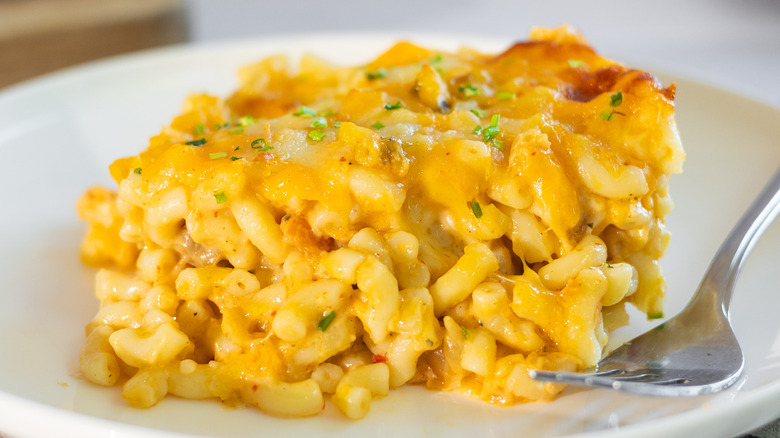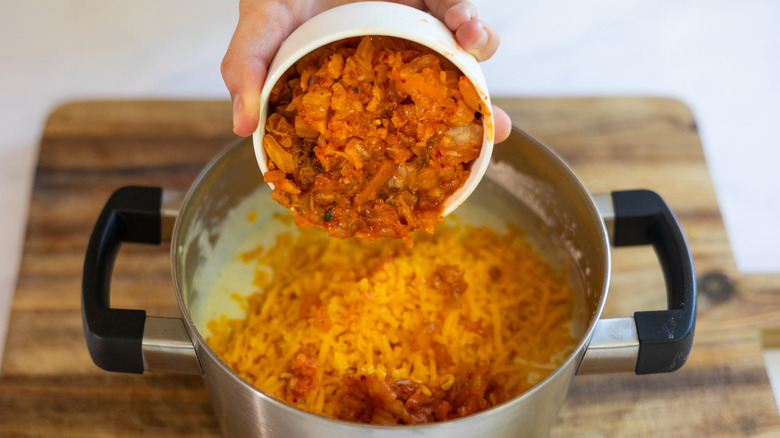Kimchi Is The Secret Ingredient To Give Classic Mac And Cheese A Tangy Upgrade
Kimchi and cheese go together like peanut butter and jelly, so if you haven't tasted this combo in mac and cheese yet, you're going to want to give it a try. There are at least 14 different types of kimchi, but for the purposes of this dish, you'll want to go for the baechu type, which is made from Napa cabbage. In this variety, the cabbage is fermented with gochugaru (Korean chili flakes), Korean fish sauce, salt, saeujeot (salted shrimp), sticky rice flour, and sugar.
The fishy and sugary tastes take a backseat, however, and you end up with fermented veggies that are briny, spicy, tangy, and full of umami flavor. When offset with the rich, mild ingredients in mac and cheese (noodles, butter, flour, milk, and cheese), kimchi provides a welcome boost of sharp flavor — like a dash of your favorite hot sauce, but with a more well-rounded, acidic taste. And amidst the ooey-gooeyness of soft pasta and melted cheese, adding kimchi will bring a crunchy bite that gives this comfort food dish a major upgrade.
How to make kimchi mac and cheese
To make the kimchi mac and cheese process as simple as possible, buy a jar of the fermented Napa cabbage instead of making it at home. Keep in mind that brands can make containers with varying levels of spice — for instance, Madge's Food Company sells both a regular and a spicy version of its vegan kimchi. We'd suggest going with a spicier jar, since it will be dispersed within your mac and cheese, but feel free to choose a classic variety if you don't want too much heat.
Before you incorporate the fermented cabbage into your mac and cheese recipe, you'll also want to chop it up into fine pieces. If it looks a little wet, don't worry: Kimchi juice is full of all of the same umami goodness as the veggies themselves, and it's fine to include a little in the sauce.
You can add your new ingredient into the sauce at the end of cooking — after you've made a roux and melted the cheese — or you can saute it with your aromatics (garlic and onion) and build your sauce on top of it. Either way, once your sauce is complete, you'll want to stir in the noodles and bake the entire mixture, like you normally would with mac and cheese. To amplify the Korean flavor, top off your finished dish with a sprinkle of sesame seeds and gochugaru.

